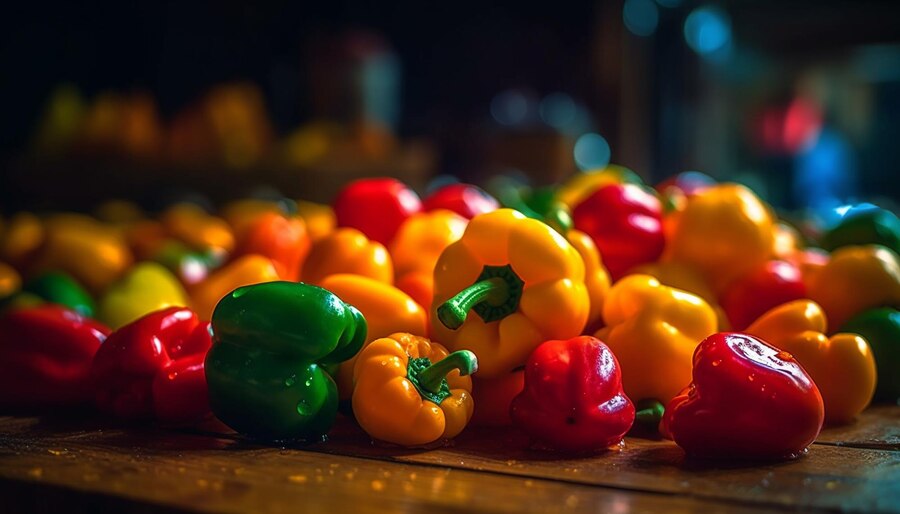Scotch bonnet peppers, known for their distinctive shape and intense heat, are a staple in Caribbean cuisine. With their fruity flavor and bright color, they are not only used for their heat but also to enhance the taste of various dishes. This article delves into the origins, culinary uses, health benefits, and cultivation of Scotch bonnet peppers, providing a comprehensive guide for enthusiasts and chefs alike.
Origin of Scotch Bonnet Peppers
Scotch bonnet peppers are believed to have originated in the Caribbean, specifically in Jamaica, where they are a fundamental ingredient in local dishes. The name “Scotch bonnet” is thought to be derived from the resemblance of the pepper’s shape to a Scottish tam o’ shanter hat. This pepper belongs to the Capsicum chinense species, which includes some of the hottest peppers in the world.
While the Scotch bonnet is primarily associated with Caribbean cuisine, it is also cultivated in other regions, including parts of Central America and Africa. This pepper thrives in warm climates, making it a popular choice for gardeners in tropical and subtropical regions. The vibrant colors of Scotch bonnets—ranging from green to yellow, orange, and red—are a testament to their ripeness and flavor.
Flavor Profile and Heat Level
One of the most remarkable aspects of Scotch bonnet peppers is their unique flavor profile. Unlike many hot peppers, which can taste purely spicy, Scotch bonnets offer a complex sweetness that balances their heat. The fruitiness of these peppers makes them ideal for salsas, sauces, and marinades.
In terms of heat, Scotch bonnet peppers rank between 100,000 to 350,000 Scoville Heat Units (SHU). To put this into perspective, jalapeño peppers range from 2,500 to 8,000 SHU, making Scotch bonnets significantly hotter. This intense heat can add a fiery kick to dishes, but it can also be tempered with the right cooking techniques and complementary ingredients.
Culinary Uses of Scotch Bonnet Peppers
Scotch bonnet peppers are integral to many Caribbean dishes. Here are some popular ways to use them in cooking:
Jerk Seasoning
One of the most famous uses of Scotch bonnet peppers is in jerk seasoning. This traditional Jamaican marinade typically combines the peppers with spices such as allspice, thyme, cinnamon, and garlic. The resulting mixture is used to marinate meats, especially chicken and pork, before grilling or smoking. The flavor imparted by the Scotch bonnet creates a memorable dish with a spicy and aromatic profile.
Hot Sauces
Scotch bonnet peppers are often the star ingredient in hot sauces. Their heat and flavor are perfect for creating a fiery condiment that can elevate a wide range of dishes. Caribbean hot sauces often blend Scotch bonnets with vinegar, salt, and other spices, resulting in a tangy and spicy sauce that pairs well with everything from fried foods to rice and beans.
Soups and Stews
In Caribbean cuisine, Scotch bonnet peppers are commonly added to soups and stews. They impart a robust flavor and heat that enhances the overall taste of the dish. Popular examples include Caribbean fish stew and pepper pot soup, where the peppers are added whole or chopped to infuse their flavor throughout the dish.
Salsas and Relishes
The fruity flavor of Scotch bonnet peppers makes them a great addition to fresh salsas and relishes. Combining diced Scotch bonnets with tomatoes, onions, cilantro, and lime juice creates a vibrant salsa that can be served with grilled meats or as a dip for tortilla chips. The heat of the peppers adds an exciting element to the fresh ingredients.
Marinades
Scotch bonnets can be incorporated into marinades for meats, fish, and vegetables. Blending the peppers with olive oil, citrus juice, and herbs creates a flavorful marinade that infuses the food with heat and aromatic flavors. This method is particularly effective for grilling, as the heat helps to develop a delicious char on the meat.
Health Benefits of Scotch Bonnet Peppers
In addition to their culinary appeal, Scotch bonnet peppers offer several health benefits. Here are some notable advantages of incorporating them into your diet:
Rich in Nutrients
Scotch bonnet peppers are low in calories and packed with essential nutrients. They are a good source of vitamins A and C, which are important for immune function and skin health. The antioxidants in these peppers help combat oxidative stress and may reduce the risk of chronic diseases.
Boost Metabolism
The capsaicin found in Scotch bonnet peppers is known to boost metabolism and promote fat burning. Studies have shown that consuming spicy foods can increase calorie expenditure, making these peppers a great addition to a weight management plan.
Pain Relief
Capsaicin has been shown to have analgesic properties. When applied topically, it can provide relief from pain, particularly in conditions such as arthritis and neuropathy. While this benefit is more relevant for capsaicin creams, incorporating spicy foods into your diet may offer mild pain relief as well.
Anti-Inflammatory Properties
Scotch bonnet’s peppers contain compounds that exhibit anti-inflammatory effects. Regular consumption may help reduce inflammation in the body, contributing to overall bonnet’s and well-being.
Growing Scotch Bonnet Peppers
For those interested in growing their own Scotch bonnet peppers, here are some essential tips to get started:
Climate and Location
Scotch bonnet’s peppers thrive in warm, tropical climates with plenty of sunlight. They prefer temperatures between 70°F to 90°F (21°C to 32°C). If you’re in a cooler region, consider starting seeds indoors and transplanting them outside once the weather warms up.
Soil Preparation
Well-draining, nutrient-rich soil is crucial for growing healthy Scotch bonnet plants. Amend the soil with compost or well-rotted manure to provide essential nutrients. Aim for a pH level between 6.0 and 6.8 for optimal growth.
Planting and Care
Plant Scotch bonnet’s seeds about ¼ inch deep in pots or directly in the garden. Space the plants 18 to 24 inches apart to allow for adequate airflow. Water the plants regularly, keeping the soil consistently moist but not waterlogged. Fertilize with a balanced fertilizer every few weeks to support growth.
Pest and Disease Management
Keep an eye out for common pests such as aphids and spider mites. Organic insecticidal soap can be effective in managing these pests. Additionally, practicing crop rotation and maintaining good sanitation can help prevent diseases.
Harvesting
Scotch bonnet’s peppers typically take about 75 to 90 days to mature. Harvest the peppers when they have reached their full color—either green, yellow, orange, or red, depending on the variety. Use gloves when handling the peppers, as their heat can irritate the skin.
Conclusion
Scotch bonnet peppers are a versatile and flavorful addition to various dishes, particularly in Caribbean cuisine. Their unique balance of heat and fruity flavor makes them a sought-after ingredient for chefs and home cooks alike. From jerk seasoning to hot sauces, the culinary applications of Scotch bonnets are endless. Moreover, the health benefits associated with these peppers add to their appeal, making them not only delicious but also nutritious.
Whether you’re growing them in your garden or incorporating them into your meals, Scotch bonnet’s peppers offer a delightful experience that ignites the taste buds and warms the soul.
FAQs
What do Scotch bonnet peppers taste like?
Scotch bonnet peppers have a sweet, fruity flavor with intense heat. They offer a unique taste that distinguishes them from other hot peppers.
How hot are Scotch bonnet peppers compared to jalapeños?
Scotch bonnet’s peppers are significantly hotter than jalapeños, ranging from 100,000 to 350,000 SHU compared to jalapeños’ 2,500 to 8,000 SHU.
Can I substitute Scotch bonnet peppers in recipes?
If Scotch bonnet’s peppers are unavailable, you can use habanero peppers as a substitute, as they have a similar heat level and flavor profile.
Are Scotch bonnet peppers good for you?
Yes, Scotch bonnet’s peppers are rich in vitamins and antioxidants. They can boost metabolism, reduce inflammation, and provide potential pain relief.
How should I handle Scotch bonnet peppers?
Always wear gloves when handling Scotch bonnet’s peppers to avoid skin irritation. Wash your hands thoroughly after handling them, and avoid touching your face or eyes.







